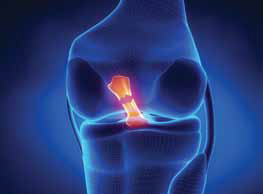
If you have torn your anterior cruciate ligament (ACL), the main ligament that stabilizes the knee, and are scheduled for reconstructive surgery to repair it, your surgeon could use either an autograft or an allograft. What is the difference between the two?
An autograft is a piece of tissue removed from your body and used to replace the torn ACL. Advantages of autografts include
- no chance of getting a disease from the graft because it is your own tissue
- no problems of supply and demand because your own tissue is always available
- no problems incorporating the tissue into the knee in the long term
However, because two operations are involved—obtaining the graft tissue and then using it to replace the torn ACL—the chance of surgical complications increases. In addition, a limited amount of tissue can be removed for grafting without causing collateral damage. People who receive autografts experience more pain the first two weeks after the operation and take longer to return to their daily activities.
An allograft is cleaned and sterilized tissue taken from a cadaver. Advantages of allografts include
- a shorter operation
- less initial pain and a quicker return to daily activities
- a larger amount of tendon is available for the surgeon to work with
Allografts are cleaned and sterilized using special processes, making the risk of disease transmission extremely low—one out of two million donated tissues. However, allografts may be less sturdy than autografts because they usually come from older donors, and the sterilization process can weaken the tissue. This makes using allografts less desirable in some groups of patients. Also, the demand for allografts usually exceeds supply.
Discuss with your surgeon whether an autograft or allograft best meets your particular lifestyle needs. And remember: A program of postoperative physical therapy exercises designed by us will increase your range of motion and get you back to daily activities more quickly and completely following this procedure.

















